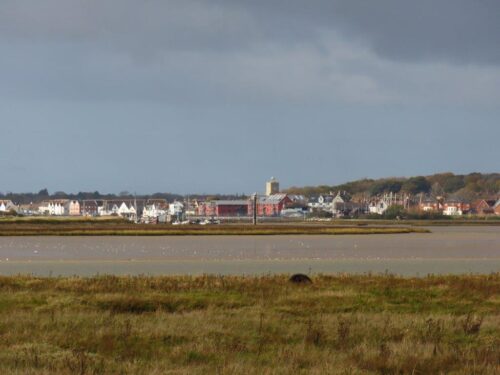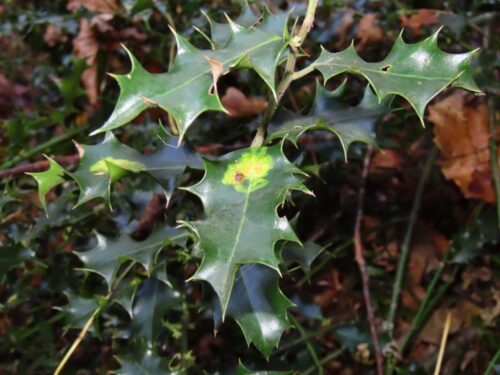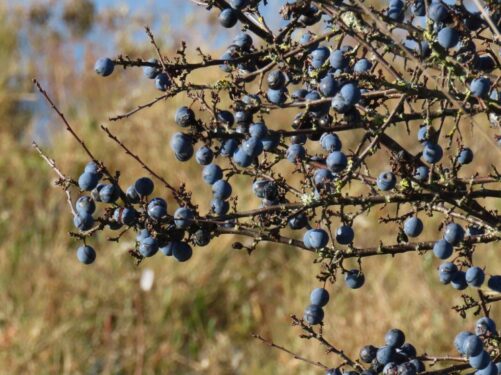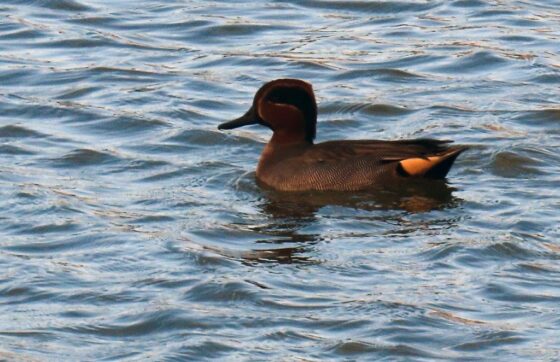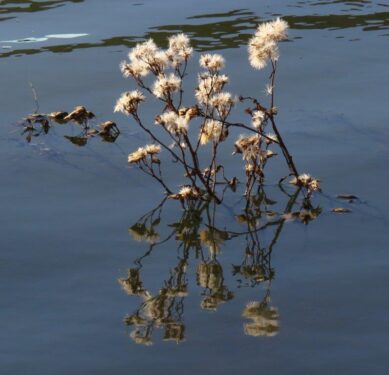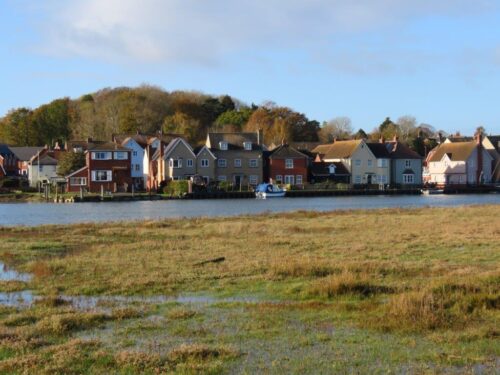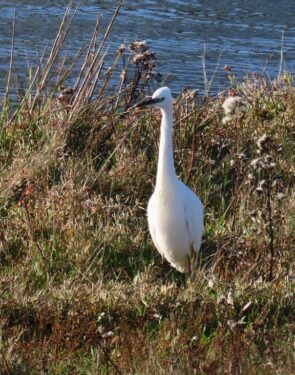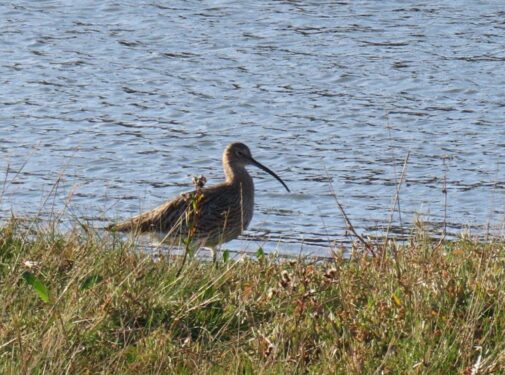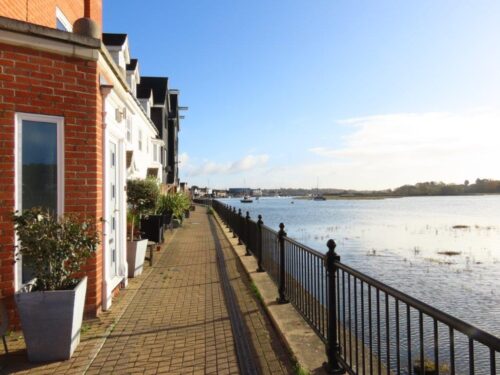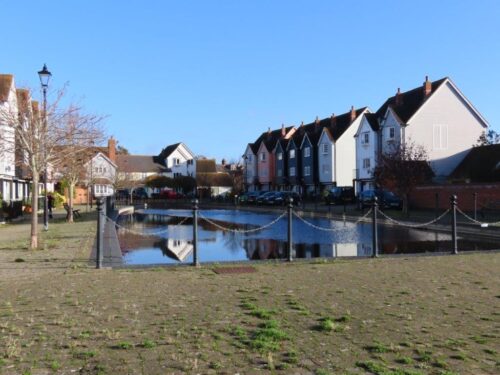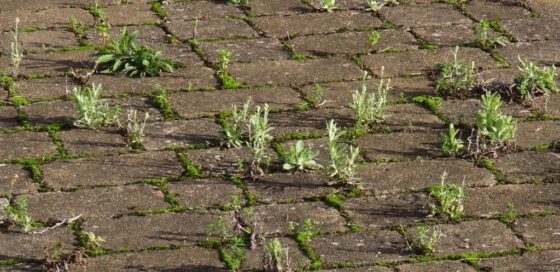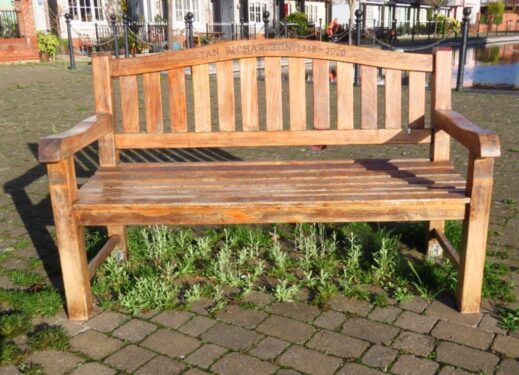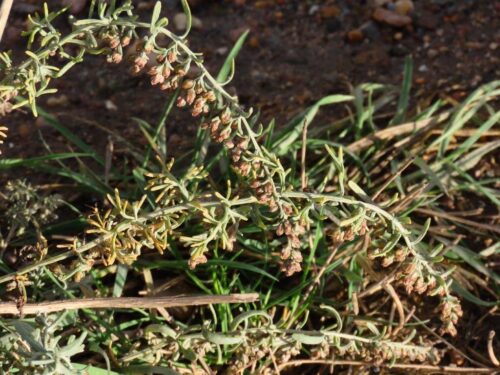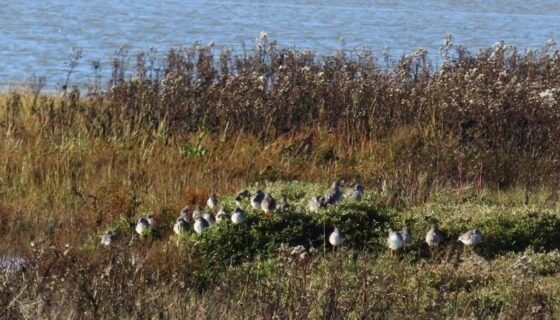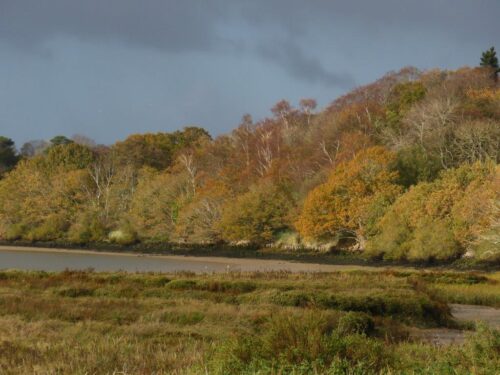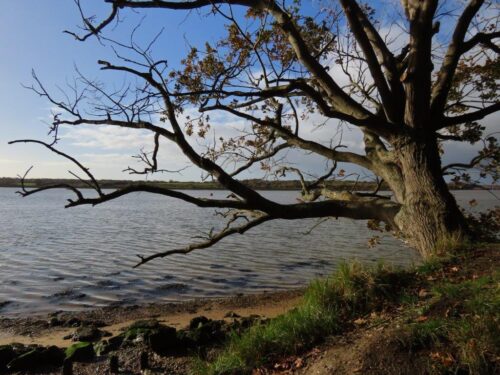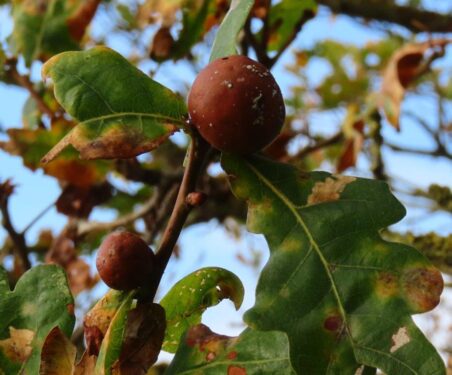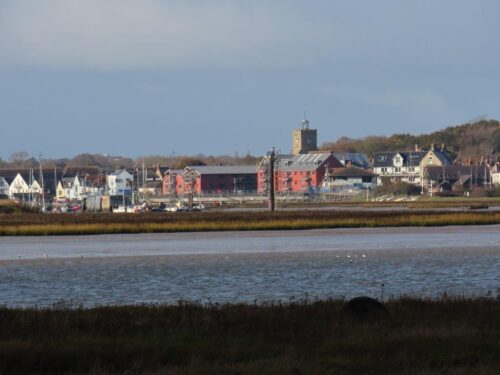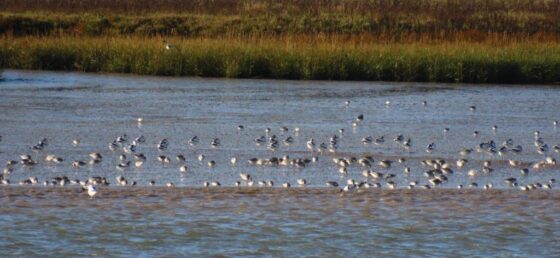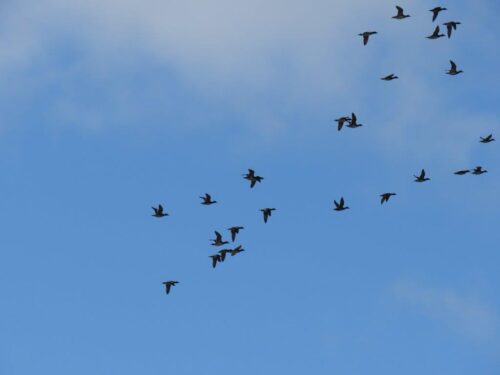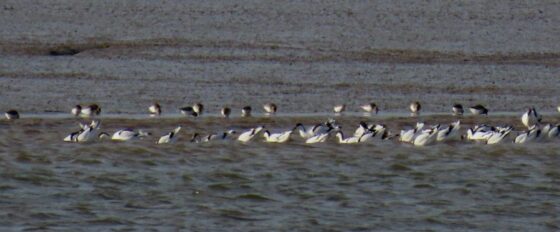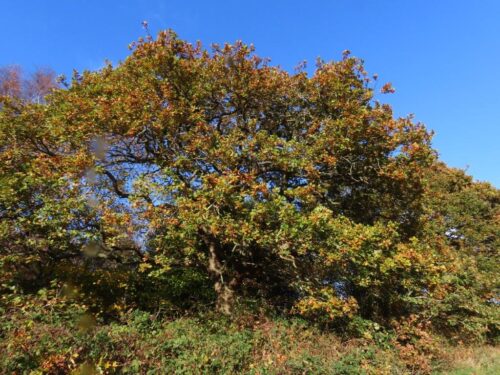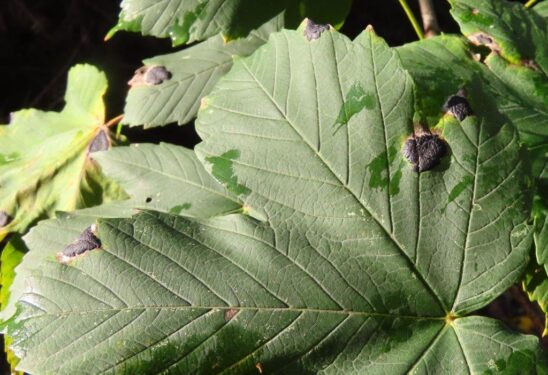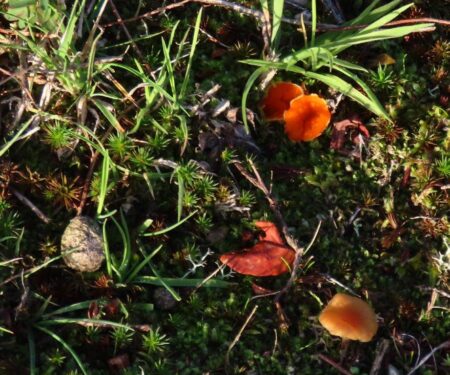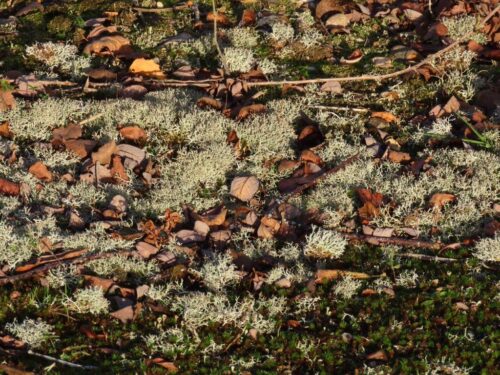It was the day that winter arrived in Wivenhoe. The wind swung round the north overnight, picked up strength and dropped what had been above-average temperatures for weeks to below-average in an instant. But nothing stops Naturetrek, and the select group met up as planned at Wivenhoe Station, well wrapped-up.
Starting upstream, we made a diversion into Wivenhoe Wood, autumn leaves still turning on the branches, others crackling underfoot as we looked at one of the few Butchers’-broom plants in the wood. With careful searching we managed to find one opened flower, a month or two ahead of the expected time.
Robins were singing wistfully, although other woodland birds remained quiet, giving us chance to explore the wonderful world of leaf-mines, with Holly Leafy-miner fly blotches on many a leaf.
Around Ferry Marsh, the reedbeds swished in the wind, a psithurism seemingly designed to hide the contact calls of any reedbed birds. But along the sea wall, there was Blackthorn covered in ripe sloes and a lovely male Stonechat showed well, albeit suffering from the aggressive attentions of a territorial Robin, while Teals dabbled in the shallows among to equally copiously fruiting Sea Asters.
But it was clear something was amiss with the tide. There was a lot of water, and it was not moving: it seemed the Wivenhoe Tidal Barrier must have been closed, very surprising given that the predicted high tide has passed, and we were still about five days away from the next round of spring tides… So while the Dabchicks were happy, most of the waders had to hunker down in their saltmarsh roosts, apart from the longer-legged Curlews and Little Egrets.
Along Wivenhoe waterfront, as always when seeing it through the eyes of those who had never been there before, I came to appreciate more fully how lucky we are to live here. This includes the rare plants in the block-paving cracks, especially Four-leaved Allseed and Jersey Cudweed, especially luxuriant beneath the benches away from trampling feet.
Further upstream than I have found it before, we also found Sea Wormwood, giving all the chance to scrunch and sniff the Green Fairy, the essence of absinthe.
The barrier was still closed as we reached it, making me think it must be closed for maintenance. But no, once downstream it was clear that the tide was still fully in. Clearly the weather conditions had produced a tidal surge that had delayed the tidal peak by a couple of hours, and produced a peak much higher than the astronomical prediction. Always a good opportunity to talk about the vulnerability of those living on the edge of the tide, and the arrogance of those who think we can win the fight against Nature.
So onward we went along the sea wall, the tide on the seaward side towering a couple of metres above the level of the grazing marsh to landward. Redshanks and Black-tailed Godwits were still resolutely at roost, while Linnets twittered from the bushes and Meadow Pipits crept silently across the marsh, occasionally erupting in a flurry of ‘peep‘s.
Into Grange Wood where ancient woodland tumbles down to the tide in a most un-Essex-like manner, and an introduction to the fascinating world of galls, exemplified by both marble- and spangle-galls…
… and by the time we reached our lunch spot, the mudflats were starting to appear, covered in hungry feeding waders (Curlews, Black-tailed Godwits, Grey Plovers, Knots, Redshanks and Dunlins) along with Avocets, Wigeons and Brent Geese in the shallows. In fact the surge had done us a favour, meaning that the water birds were in better light than if we had seen them when we should have.
A quick check of the rain forecast showed a squall heading our way, so we took to the woods and emerged a few minutes later at the top of the Essex Alps as the sun came out to celebrate the passing of the sleety shower.
Magnificent boundary pollards and coppice stools, more galls and basking insects, Sycamore Tar-spot fungus, signs of Dutch Elm Disease and some huge Butchers’-brooms, these with still a few red berries from last winter’s flowers…
… and along Cutthroat Lane, the cold wind having abated with the passage of the rain, and the sparkling sunlight bringing welcome warmth and life to the autumn colours. A very appropriate place to hear the ‘happy peals’ of the Wivenhoe Church bells drifting up from the lowlands maybe 3km away which marked the funeral of our friend Graham….
And it was then into Cockaynes Reserve for more autumnal fare, including Redpolls and Siskins heading to the Alders, and fungi sprouting from the heathland, life after gravel extraction: the orange discs of a Neottiella species among the Reindeer Lichen and a couple of fruit-bodies of the cheesecap Russula nitida, a mycorrhizal species associated with the roots of Silver Birch.
Then in a nod to the spring, which will arrive however long the midwinter gloom lasts: Gorse in fresh flower, a beacon to any passing pollinator.
And all that was left was a wander back along the ridge, past the field of Water Buffalos, and down to Wivenhoe, paying homage to the Old King George Oak whose future is still undecided.
